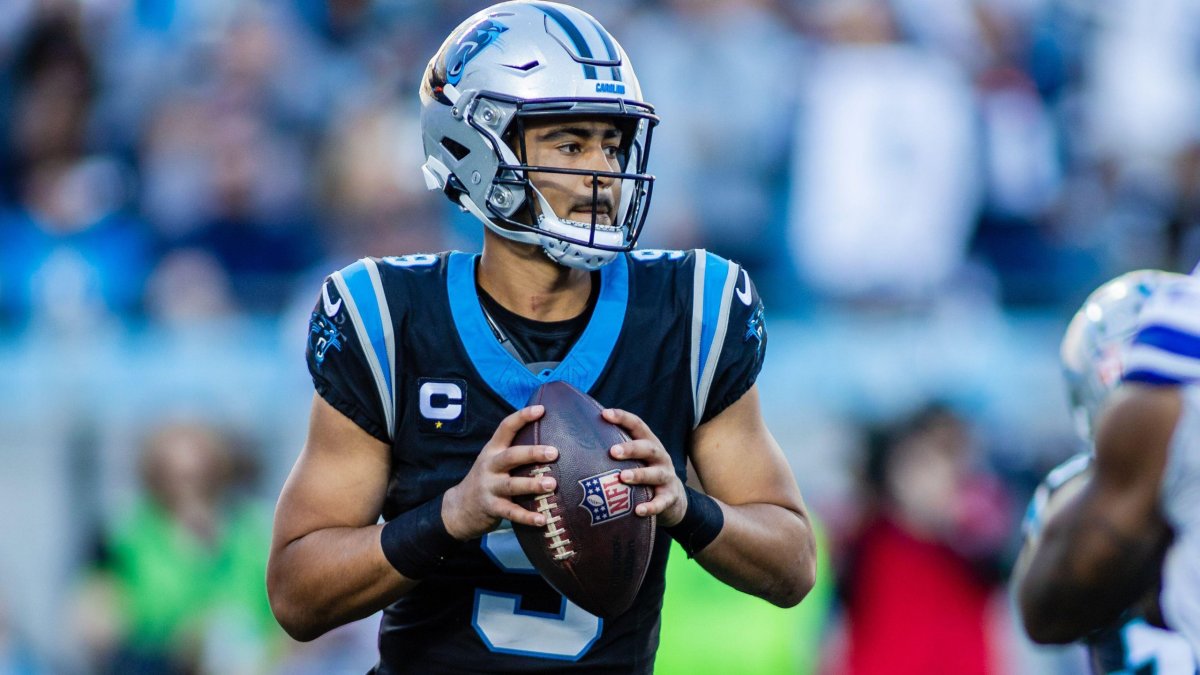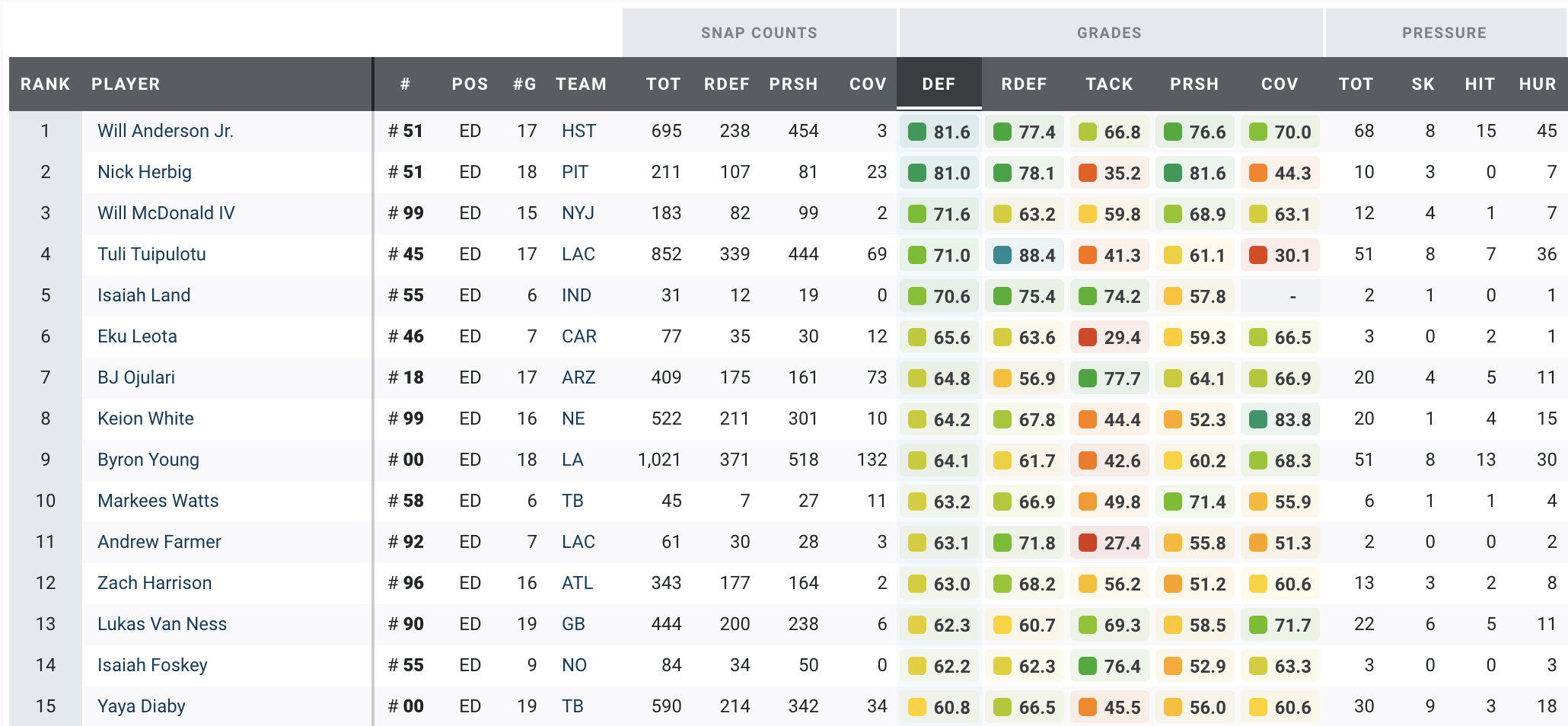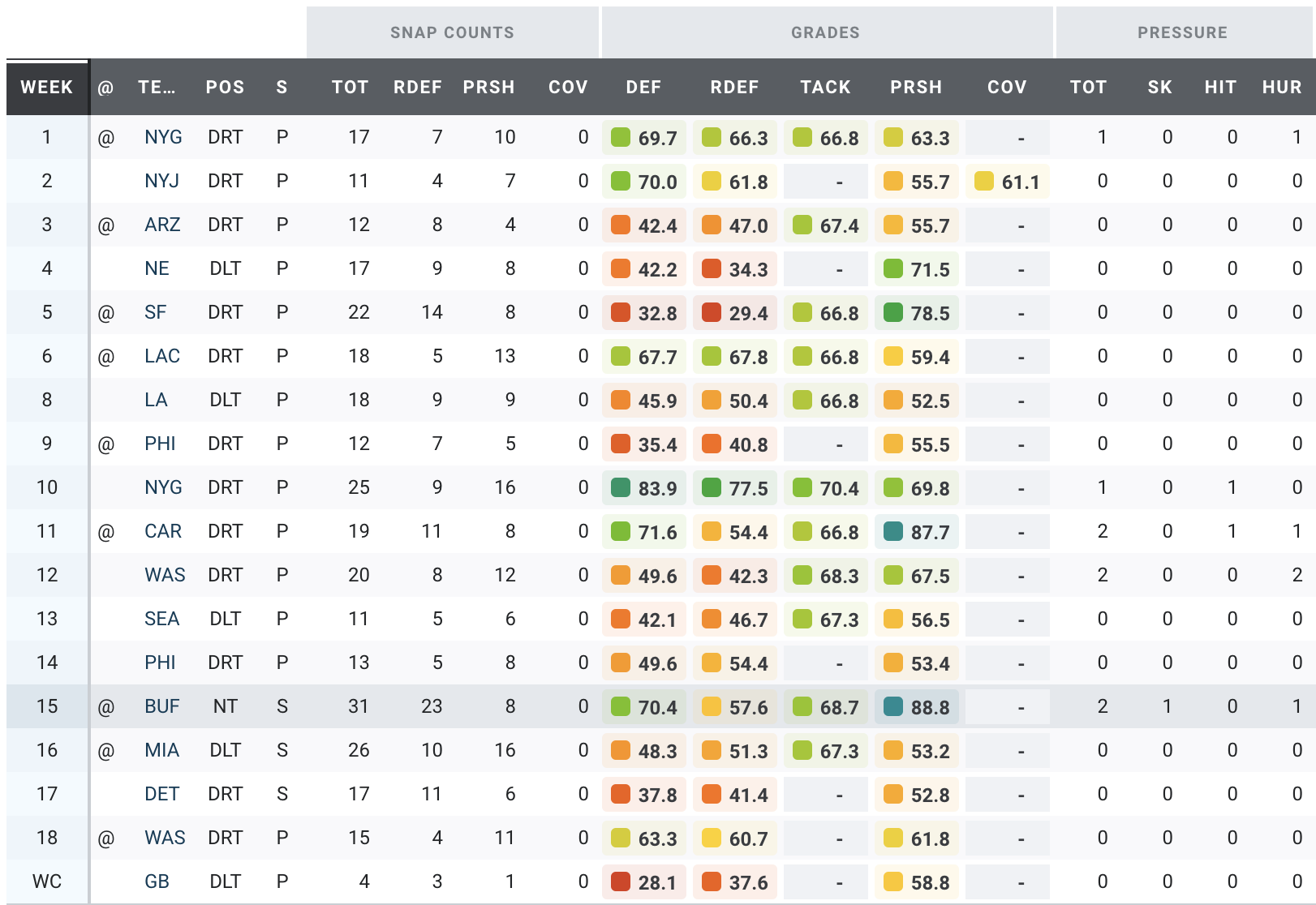NFL
10 NFL players under pressure to perform in Year 2

• What will Bryce Young do with more support in Carolina? 2024 will be an important prove-it year for last year’s top draft pick, as the Panthers worked hard to upgrade every support structure around him this offseason.
• Quentin Johnston needs to carve out a useful role in 2024: The first-rounder displayed a very limited skill set in 2023, averaging just 0.88 yards per route run to rank 22nd among rookie receivers.
• Get a head start on fantasy football: Use PFF’s fantasy football mock draft simulator to create real live mock draft simulations to prepare for your live draft!
Estimated Reading Time: 7 minutes
As the NFL gears up for the 2024 season, much of the anticipation and excitement is focused on second-year players.
While some were standout performers as rookies, generating plenty of offseason excitement about their development, others did not perform well in their debut seasons and face pressure to improve this year.
From quarterbacks to linemen, we analyze the key players who need to step up their game and deliver results for their teams in 2024.
QB Bryce Young, Carolina Panthers
There’s no real way to look positively on Bryce Young’s rookie campaign, but the good news is that the Panthers’ front office recognized the severity of the situation and upgraded every support structure around him this offseason, from the coaching to the receivers to the offensive line to the backfield.
Young averaged just 5.5 yards per attempt last season, recording 22 turnover-worthy plays and an astronomical pressure-to-sack rate of 24.5%.
What makes his season’s struggles even more damning is the outstanding year fellow rookie quarterback C.J. Stroud had for the Texans. As the other real contender for the No. 1 overall pick, Stroud and his success will draw obvious questions about whether Carolina made the right decision at the top of the 2023 draft.
The Panthers will hope that the team around Young was a far bigger factor in his failure as a rookie than his ability, and Year 2 is when he needs to prove them right.
EDGE Tyree Wilson, Las Vegas Raiders
Wilson’s draft position was a big question mark until the Raiders made him the No. 7 overall pick, and the most concerning thing about his rookie year was actually that he saw quite a lot of playing time.
He was so anonymous within games that the tendency is to assume he didn’t feature much, but he played 493 total snaps, rushed the passer 308 times and notched just 24 total pressures. He posted just a 50.4 PFF pass-rushing grade and won only 6.4% of his pass-rush snaps.
By any measure, this was an extremely poor rookie season for a player who was always more of an athletic project than some other pass-rushers in the draft. Wilson now needs to take a big step forward in the offseason to avoid going down as yet another Raiders first-round miss.
EDGE Lukas Van Ness, Green Bay Packers
Green Bay spent a first-round pick on Van Ness, selecting him at No. 13 overall with the idea that he could slot in as a rotational edge rusher right away and eventually succeed somebody like Preston Smith.
At 6-foot-5 and over 270 pounds, Van Ness has something of a tweener body type, but the Packers played him almost exclusively on the outside, where he was very ineffective.
On 444 total snaps, Van Ness notched only 22 total pressures, though his run defense was notably better.
He enters Year 2 under pressure to succeed and with fewer options than he had as a rookie, as fellow rookie Karl Brooks excelled on the inside in his first season, potentially removing a pathway to the interior rotation for Van Ness going forward.

CB Emmanuel Forbes, Washington Commanders
The NFL has been far more ready in recent years to push the boundaries of size thresholds, and so it was last year when the Washington Commanders drafted Emmanuel Forbes at No. 16 overall despite his weighing just 166 pounds at the NFL Combine.
In Week 4, Forbes spent much of his time against Philadelphia trying to cover A.J. Brown, who weighs 226 pounds — some 60 pounds heavier than Forbes’ NFL Combine measurement. That went about as well as you would expect (10 targets, six catches, 147 yards and two touchdowns just to that matchup), and Forbes was eventually benched later in the year.
He did improve from a lower position on the cornerback depth chart, but his rookie season overall was a struggle. Washington still has an acute need at cornerback, and Forbes is unlikely to pack on 40 pounds of bulk any time soon. So, he enters his sophomore season in need of rapid development in his ability to succeed at this level as an undersized player, particularly in a division with some big and very good receivers.
WR Quentin Johnston, Los Angeles Chargers
Puka Nacua led all rookie receivers last season with 1,486 yards. He was the only rookie to top 1,000, but that’s becoming a more common occurrence in this transition between the college and NFL landscape. First-round pick Quentin Johnston notched just 431 yards despite the Chargers losing multiple receivers throughout the season and needing him more than they expected when they drafted him.
Johnston displayed a very limited skill set, and the team seemed completely unable to carve him out even a limited role within the offense that played to his strengths. Overall, he averaged just 0.88 yards per route run, ranking 22nd among rookie receivers.
As a player with a draft profile that wasn’t to everybody’s tastes, Johnston enters his second season under real pressure to show that he can be effective in the NFL, even if it’s in a certain role or on a less complete route tree.
DI Mazi Smith, Dallas Cowboys
Dallas drafted Smith — decried as a reach by some at the time — in the first round to finally solve the weak underbelly the team’s defense had against the run over the past few years.
Smith weighed 323 pounds at the NFL Combine, and the one thing he excelled at in college was stuffing the run and anchoring the middle of the line.
The Cowboys inexplicably then asked him to drop a ton of weight and seemed confused when he made little impact as a rookie.
Smith finished 2023 with a 34.9 PFF run-defense grade and offered little as a pass-rusher, with only eight pressures all season.
The Cowboys know they need more from him in 2024, with Jerry Jones himself saying he has to do a lot better in Year 2. Coordinator Mike Zimmer brings a new defense and a new eye to Dallas, and Smith can only hope that he will show his college form if he can pack the weight back on and finally provide the stout run defense in the middle the team has been looking for.

QB Will Levis, Tennessee Titans
Levis is under a different type of pressure than most players on this list. Expected to be a first-round selection a year ago, Levis fell to the second round but still got his opportunity to start by the midpoint of the season. His first start saw him throw four touchdown passes in an offense that had been stalled up until that point, and that game alone pretty much earned him the starting job.
The team has thrown resources at wide receiver and the offensive line to try and give him the chance to succeed this year, but now he has to show that he can — otherwise, that opportunity will be short-lived.
Four touchdowns in a single game was outstanding, but he tossed only four more the rest of his season across eight games. He averaged 8.2 yards per attempt in his debut, but just 7.1 overall in his rookie campaign.
Levis has outstanding physical talent and has already flashed a high ceiling, but now he is under pressure to seize the opportunity he wasn’t sure he was ever going to get when he slipped in the draft.
WR Jonathan Mingo, Carolina Panthers
The current dynamic of instant success from so many young receivers entering the league puts immense pressure on any receiver who fails to replicate that success when the team is counting on it.
Carolina identified Jonathan Mingo last season as the player to upgrade its receiver room and transform an on-paper weakness into a group good enough to help Bryce Young thrive. Instead, Mingo was one of the most ineffective receivers in the league, averaging 0.78 yards per route run, 25th just among rookies. He was targeted 83 times on the season but had just 15 first-down receptions.
There’s a solid chance Mingo has already been written off as a player who can succeed in the NFL. But if he wants to show he can, this is going to be the season it happens. Rookie Xavier Legette and Diontae Johnson will move him down the depth chart and take over most of the outside snaps, leaving Mingo to focus on potentially succeeding Adam Thielen in the slot. Mingo has struggled on the outside against tight coverage but could still project as a big-slot weapon going forward.
DI Gervon Dexter Sr., Chicago Bears
The Chicago Bears transformed their offense this offseason in preparation for Caleb Williams to take over at quarterback and propel the team forward.
Though they made a couple of strategic additions on defense, the overall approach has been more one of keeping faith with the young players they have in place and letting them improve as they develop.
One of those key defensive players is the team’s 2023 second-round defensive tackle, Gervon Dexter.
Dexter flashed potential as a rookie, and the Bears are extremely high on him, but he recorded a 36.2 PFF run-defense grade in his first season. His pass-rush production was significantly better, with 29 total pressures coming from 297 pass-rushing snaps, but Dexter needs to take that leap in Year 2 to justify Chicago’s faith and not put a cap on how good this defense can be.
C John Michael Schmitz, New York Giants
Schmitz was an outstanding college center, but his measurables coming into the draft were not spectacular. He brings prototypical size but ran a 5.35-second 40-yard dash and had a 10-yard split in the 29th percentile.
His college tape was littered with the types of blocks you need athleticism to execute, so many teams were still very high on his ability to thrive in the NFL, including the Giants, who drafted him at No. 57 overall and handed him the starting job.
He went on to surrender 30 quarterback pressures, including five sacks, earning just a 26.9 PFF pass-blocking grade. His run blocking, a college strength, was below average, and there was very little in the way of positive performances in his first year.
The rest of the Giants’ line was a disaster, and the offense was generally dysfunctional, but Schmitz now enters Year 2 under pressure to rescue his career after a lackluster debut campaign.










